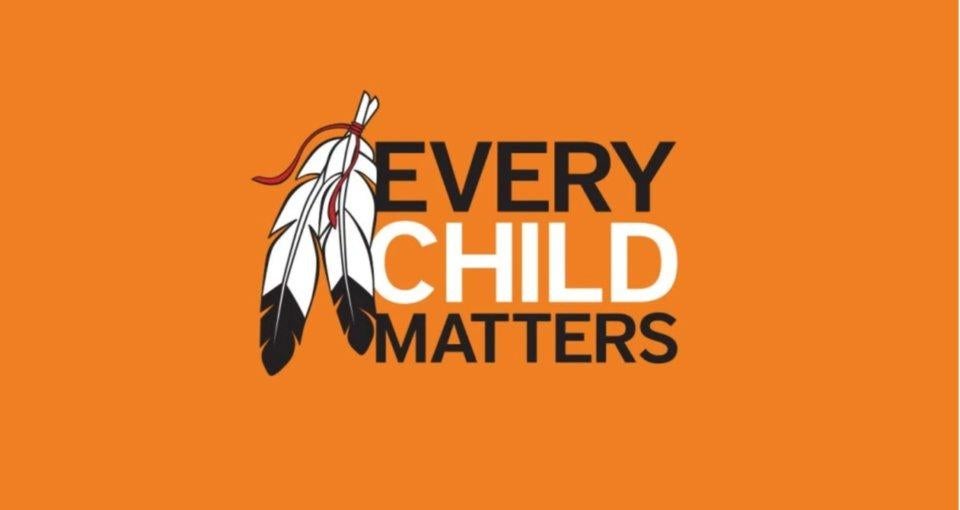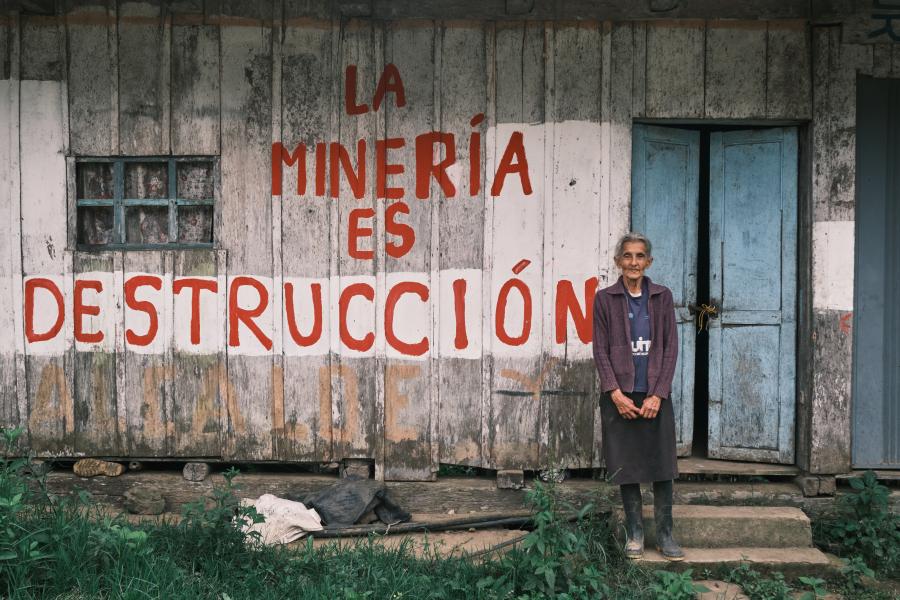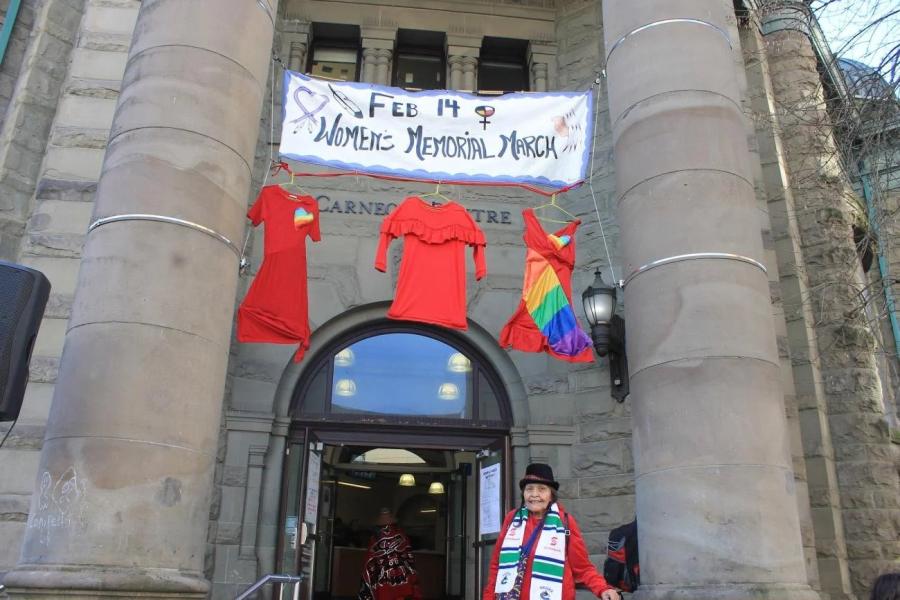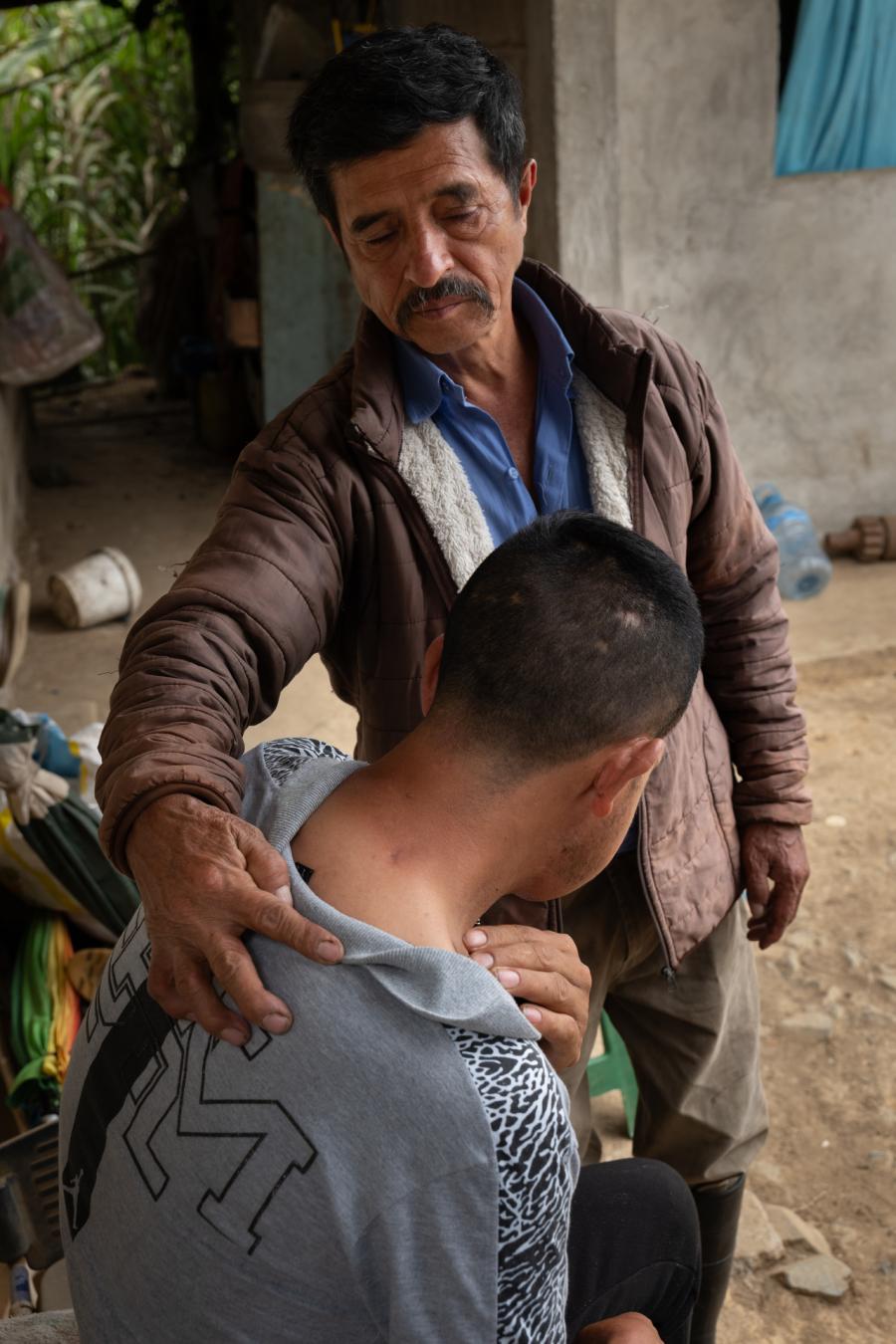
By Sarah Rain (Anishinaabe) and Miriam Abel (CS Intern)
This article shares the history of Indian residential schools in Canada and the colonial violence that harmed Indigenous Nations, particularly children. The content may be upsetting. If you need emotional support, please contact the 24-hour Residential School Crisis Line at 1-866-925-4419.
My name is Sarah Rain. I am Anishinaabe (Saulteaux) from Zagime Anishinabek, Treaty 4 territory - Saskatchewan. I currently live and work in the unceded, unsurrendered lands of the Sto:lo Peoples. This may not be an easy article to read, so I thank you for your courage to take these words in.
My name is Miriam Abel and I am a German settler on unceded lands of the Tsleil-Waututh (səl̓ilw̓ətaʔɬ), Kwikwetlem (kʷikʷəƛ̓əm), Squamish (Sḵwx̱wú7mesh Úxwumixw), and Musqueam (xʷməθkʷəy̓əm) Nations. I hold my hands up to you for taking your time today to read these words. There is so much power in listening and learning. Thank you.
Lebret Indian Residential School (Qu’Appelle Industrial School) 1884 - 1998, Treaty 4, Saskatchewan. Parents and grandfathers would camp outside the residential school, waiting for their children, who were not allowed to leave. Source: O.B. Buell / Library and Archives Canada / PA-182246.
Phyllis’ Story
In 2013, a courageous Secwépemc woman named Phyllis Webstad from Stswecem'c Xgat'tem First Nation returned to the residential school she went to as a child. There, at the St. Joseph Indian Residential School Commemoration Project and Reunion event, Phyllis shared her story, and Orange Shirt Day was born.
Webstad, a third-generation survivor, attended the St. Joseph Indian Residential School near Williams Lake, British Columbia, she was six years old. Her grandmother and mother attended the same school, which operated for almost a century (1891-1981). As a gift for her first day of school, Phyllis’ grandmother picked out a bright orange shirt for her to wear. As soon as she arrived, the nuns removed her orange shirt and put her in uniform.
In her story, Phyllis writes, “The colour orange has always reminded me of that and how my feelings didn’t matter, how no one cared and how I felt like I was worth nothing. All of us little children were crying and no one cared.”
That orange shirt represents the light of her home fire and culture, the warmth of her kinship, and the safety of her home. This was taken from Phyllis; it was taken from thousands of Indigenous Peoples under colonial policy. The simple act of wearing an orange shirt tells survivors that we care and that they do not need to cry alone. We remember.
Over 150 years, more than 150,000 First Nation, Inuit, and Métis children attended Indian Residential School. The ultimate goal was to assimilate Indigenous children into the Euro-Canadian language, culture, and religion, or as Duncan Campbell Scott, deputy superintendent of the Department of Indian Affairs, declared: “Our objective is to continue until there is not a single Indian in Canada that has not been absorbed into the body politic, and there is no Indian question, and no Indian Department, that is the whole object of the Bill.”
As the residential schools began to close their doors, the height of the “Sixties Scoop” would begin. This era of mass apprehension of Indigenous babies, continued well into the 1990s (also known as the “Millennial Scoop”). It was the continuum of Indian residential school policy—the second wave of government-commissioned assimilation. Indigenous children would be taken from their homes and communities and adopted into non-Indigenous, Christian homes. Many residential school survivors had their children taken from them, further deepening the trauma of separation and loss. Social workers and judges perceived Indigenous mothers and fathers as unfit, resulting in thousands of adoptive placements “in the best interest of the child.” Indigenous children were also taken from Turtle Island, sent overseas, and into the United States.
Genocide is not an easy history to discuss, but this is Canada’s story. Colonial policy tried absorbing Indigenous Peoples into the body politic as a people with no land, language, or identity. Generations of Indigenous families would become directly impacted by these colonial policies and what the government acknowledges today as a genocide. The reality is that every Indigenous family has been impacted by the legacy of residential schools. Almost every Indigenous family has a member who was taken, or who cannot be found. Many survived the colonizing project; others were burned in its fire.
Assimilation policy split generations, targeted children, and brought suffering to our kinship and nationhood, but this was not the end of our story. The erasure and assault of assimilation would be felt for generations, yet Canada’s objective was not fulfilled. We are still here!
When we ponder on the importance of Orange Shirt Day, let us remember the courageous children—now Elders—like Phyllis Webstad, who endured being torn from her family, language, and culture and stripped of her dignity, down to her bright orange shirt, as she and thousands of other children entered into the doors of an institution meant to kill the Indian in the child.
September 30, Orange Shirt Day, is a day to recognize that the schools, the scoop, the colonial policies and projects—all that which tried to destroy our spirit and identity—happened for a time —a long time, but did not succeed. We are still here!
This is what intergenerational healing looks like: a proud Anishinaabe-Cree Ikwesens, who loves her culture. Photo by Sarah Rain.
What Orange Shirt Day Means to this Anishinaabe
In the schools that I grew up in, the only time Indigenous Peoples were mentioned was in relation to the fur trade. I certainly did not have knowledge that Indigenous children were taken and forcibly assimilated in church-run, government-funded institutions - for over a century.
I didn’t know what Nation I belonged to or what kind of “Indian” I was, either. I was raised outside of my traditional territory, culture, and kinship. Shortly after being born, I was taken from niimaama; scooped and delivered to a Finnish home.
I remember as a child, my adopted mom would have me repeat after her, “I forgive my mom for abandoning me.” That always made me cry. She would comfort me and say, “God gifted you to me,” but the truth was, I was a victim of assimilation policy—a stolen child. But we never had that conversation. I knew I was adopted, but it was explained as a noble cause, much like the mindset of early missionaries who came to save the “uncivilized” in the land of terra nullius.
In my 20s, after beginning the work of reclaiming my Anishinaabe identity and trying to understand where I came from, I found the vocabulary for my experience. I discovered I was a part of the “Sixties Scoop.” I came to a place of healing (it never really ends) when I understood that my life-giver, niimaama, never abandoned me. I was wanted and I was loved. As an adult, I really wanted to tell her that I wanted her and loved her, too.
In 2013, while fasting in 140-year-old Sundance grounds, I began to unravel in my tiny stick lodge. I grieved for my culture, kinship, and identity. What did it mean to be Indigenous? I prayed for myself, I prayed that I could forgive my abusers and heal from a life of on-and-off suffering.
I received my traditional name and fed niimaama’s spirit; I saw her dance from one level to the next. Only through our ceremonies was I able to feel the full love for my mother and the full love of my ancestors. I remember what she looked like, although I never knew her.
I entered into this time of awakening and became devoted to seeking out the truth. The truth of my experience, but also learning the stories of who we are as a collective. I would read thousands of pages on colonial policy and what Canada did to Indigenous Peoples and Nations. The injustice was overwhelming. I had to do the work of unlearning and relearning, both spiritually and mentally.
I worked as an assistant in an Indigenous law firm on the Indian Residential School Settlement Agreement. For almost a year, I read the testimonies of survivors and heard firsthand accounts of the suffering that they went through. I will always remember. In university, I focused on Indigenous history and dove deep into Canada’s colonial policies and behavior. My eyes became wide open; I had to know. There is no room for ignorance, there is no privilege in looking away.
In my journey of reclamation, beautiful people came and walked beside me. Indigenous kinship is a balm for our burning wounds. When I was 17, Gitxsan Elders from Northern British Columbia called my spirit back, “Come back to who you are.” I will always remember that day of shedding-shame and embracing my Indigenous roots. I cried my blue contact lenses out and never wore them again. I stopped telling people I was Portuguese.
The Creator sent people on my path that would help me shed my shame and become a strong and proud Anishinaabe Kwe. All through the prairies, I would be taken under the wing of adopted aunties, sisters, moms, and knowledge keepers, many of whom are survivors themselves. I found my home, my nation (Zagime Anishinabek), and my kinship. I reclaimed them and they reclaimed me.
Songs are still being sung. Moccasins are still being sewn and regalia beaded. Our mouths are filled with reclaimed language and laughter. Oral histories and teachings are still being spoken, many from the tongues of those who survived, and now from those who are learning. This is what Orange Shirt Day means to me: celebrating a victory, honoring survivors, and truth-telling.
I think of the women in my family who attended residential school, and how my “scoop” was directly linked to their experiences. Trauma was shared between the generations, but so was the resilience and our will to survive.
When my daughter and I wear an orange shirt, we proclaim our presence and survival, and when we see others wear it, we feel their pride and allyship. Wearing an orange shirt tells survivors that we are here to carry the burden together, to cry together, to stand together without shame, to acknowledge the trauma, to share stories, to mend our spirits.
I give thanks to Phyllis Webstad for her courage in sharing her residential school experience, for founding the Orange Shirt Society, and for pushing for recognition of a day to remember, one we now observe annually on September 30 across the country. Orange Shirt Day has contributed greatly to the work of truth and reconciliation in Canada. It has raised awareness through education and truth-telling.
S. Rain raises her fist in the air as a large convoy of trucks drive onto the grounds of the Kamloops Indian Residential School, in support of Tk’emlúps te Secwépemc, after the announcement of finding 215 unmarked graves. Photo by Sarah Rain.
I could write a long story about the trauma and the facts and details of Indian Residential School. I could write about the Crown, the State, and colonialism, but today my heart sits in remembrance with survivors.
This morning, my eight-year-old daughter asked for two “Indian braids.” I took a photo of her before dropping her off to school and thought to myself, she is so proud of who she is and where she comes from. When I was her age, I had no idea I was Anishinaabe. I was simply told I was a “Heinz 57.”
This evening, we had our usual bedtime conversation and she told me, “My teacher talked about residential school today.” She looked at me with her wide, brown eyes, “My spirit knew I needed to wear braids today!”
“I told my whole class that I’m Anishinaabe and Cree, and that I can even say some words in Anishinaabe, like Miigwech, which means thank you. I told lots of people at school that I’m Indigenous, I’m never ashamed to tell people I’m Indigenous.”
This is what intergenerational healing looks like. Trauma is deep within our bloodlines, but so are many blessings. We see it in the way our children show their pride, we see it in our resilience, our humor, and our joy. We are in an era of remembrance, truth-telling, resurgence, and repair. I honor and thank survivors, as they prayed for times like this. We are still here!
What Orange Shirt Day Means to a Settler
I came to so-called Canada to study Indigenous Studies and International Studies. I had moved across the world to unlearn and relearn how our world is shaped and what place I have in it. During my first Indigenous Studies lecture, my professor asked us to introduce ourselves by answering the following question: What is your relationship with the land?
I was unsure about what my answer would be. I did not want to claim to have a relationship with the land that I just arrived on. I did not want to be disrespectful and assume a connection with something so sacred without having been on the land for long, so I said, “I do not have any relationship with the land.” My classmates, rightfully so, gasped. With confusion, I continued to listen to the answers of others. Indigenous classmates spoke of responsibility, caretaking for the land, spirituality, and love. My settler classmates shared those thoughts and added that they are occupiers—they settled on these lands, often having brought violence and advancing the colonial project of Canada. That was when I understood: my relationship with this land started as soon as I stepped out of the airplane. I, too, had become a settler.
Something clicked in me that day. My relationship to the land highlighted the responsibilities I was going to have moving forward. Colonialism, a word that was foreign to me and my ignorance growing up, had suddenly become a daily reality. So, I decided to major in Indigenous Studies and commit four years of my life to learning and unlearning.
Learning is revolutionary. Admitting that I was ignorant and did not know where to start, what to do, and who to be to have good relations with Indigenous Peoples here was tough. But humility is the best starting point.
So-called Canada, the society we live in, and our global culture encourages ignorance against injustice in the world. Our moral compasses are misguided and we end up overwhelmed, either not caring or not knowing what to do.
But the beautiful thing is, there is so much to be done, so much that has been done. Phyllis Webstad sharing her story is one of them. As settlers and allies wearing our Orange Shirt is what is being done.
This Orange Shirt Day, I commit to reflecting on what role I take on the lands I occupy. Am I actively learning and unlearning? Am I offering my resources and time to support Indigenous efforts for reconciliation, land repatriation, or language revitalization? If not, what is the resistance there? What are the barriers that prevent me from standing in solidarity? Am I uncomfortable? The answer will likely be yes, and that is okay. The greatest learning occurs when we leave our comfort zone and stretch our horizon of our truth. I invite every non-Indigenous person to commit to one second of bravery and start or continue their journey of decolonization and re-Indigenization.
The greatest lesson I have learned is that we settlers have the privilege of distancing ourselves emotionally from what is happening to Indigenous Peoples. We have to actively decide to sharpen our eyes, look closely, and commit to dismantling our ignorance. Indigenous Peoples cannot look away; they live their reality daily. When we settlers learn how to feel deeply, have compassion, and step into unconditional solidarity and love for our relations on this earth, new relationships between Indigenous and non-Indigenous Peoples are possible.
Orange Shirt Day shows that reconciliation means absolutely nothing without relationships. A turning point for me on my decolonization journey (which will continue for all my life) was when I was able to connect my Indigenous friends’ stories to what I learned in the classroom. Violence against Indigenous Peoples is not history. It is so present. Sarah shared her story with me and I will never be able to look away again.
So, get to know one another on September 30. Ask someone who is wearing an orange shirt who they are. Get to know someone’s story. Ask the hard questions. Be uncomfortable. Listen deeply and feel with your heart. Let your heart and spirit guide you this Orange Shirt Day. I hold my hands up to all Indigenous Peoples and say thank you. Ishnish, Haawa, Wopila, and Mitakuye Oyasin.



